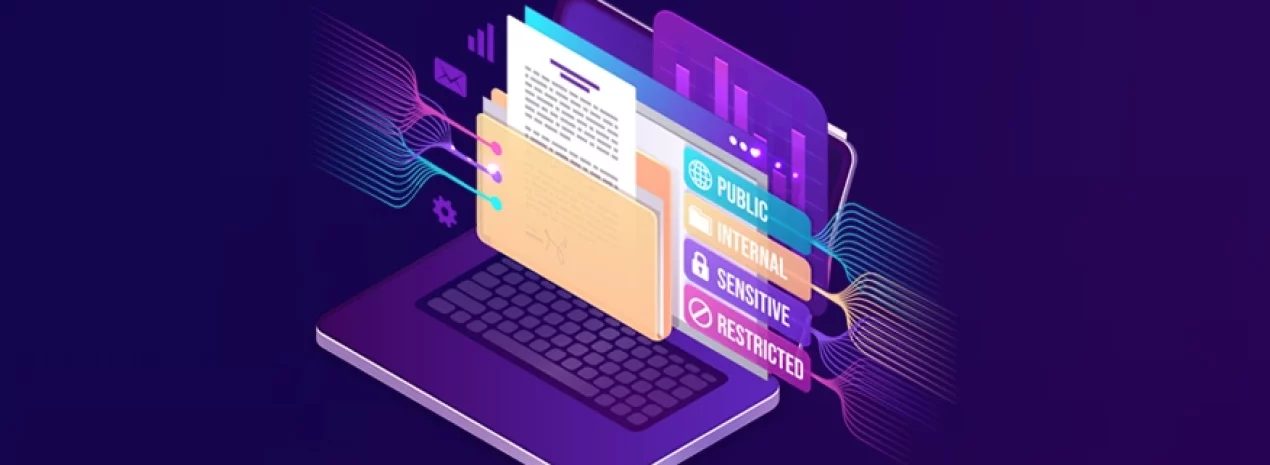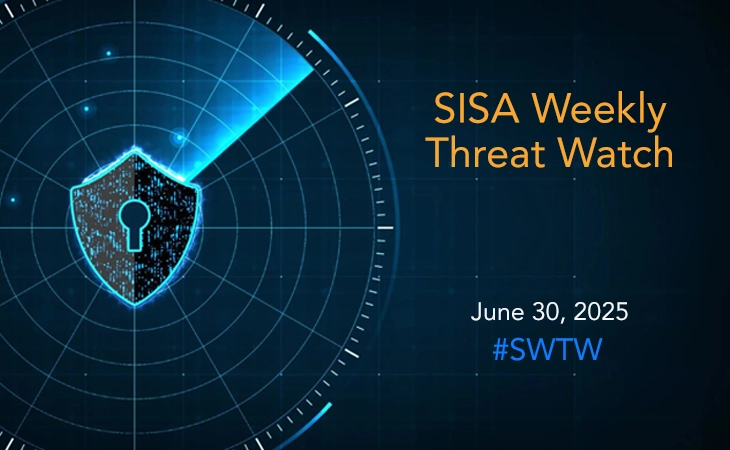

A guide to Data Classification types and levels
Data classification is the process of categorizing data based on its level of sensitivity, value, and potential impact on an organization if it is lost or stolen. Organizations can use effective data classification to safeguard sensitive information, comply with regulations, and make informed choices based on relevant data.
Data is the lifeblood of most organizations in today’s digital era. Enterprises collect, store, and transmit massive amounts of data, including sensitive information such as personal information, financial information, and intellectual property. In 2025, the total amount of data predicted to be created, captured, copied, and consumed globally is expected to reach 175 zettabytes1. As more data gets generated and collected, organizations may find it challenging to manage, protect, and navigate this vast quantity of information. This is where Data Classification comes in.
Data classification is the process of categorizing data based on its level of sensitivity, value, and potential impact on an organization if it is lost or stolen. This process of data protection assists organizations in identifying the types of data they store and where it is located by labeling data to make it more searchable and trackable. Data classification can also be used to determine who has access to the data and how it should be managed, stored, and protected. It also aids in the elimination of many data duplications, which can reduce storage and backup costs while accelerating the search process.
Data Classification Types
Organizations can use effective data classification to safeguard sensitive information, comply with regulations, and make informed choices based on relevant data. Data classification tools enable businesses to categorize data based on its sensitivity, relevance, and access level. Classification of data can be divided into three categories: context-based, content-based, and user-based.
1. Context-based data classification
Context-based data classification is especially beneficial for organizations that deal with large amounts of data and need to quickly identify pertinent information to make informed decisions. To categorize it, this type of classification uses metadata such as date, time, location, and source. By leveraging metadata and other contextual information, organizations can improve their data management practices, meet regulatory requirements, and ensure that sensitive information is properly protected.
For instance, if a payment organization is investigating into a fraudulent transaction that occurred on a specific date and time, context-based classification can be used to rapidly identify all payment data associated with that transaction. This can include information such as the customer’s name, payment amount, payment method, and transaction location. The payment organization can sort through vast amounts of data using context-based classification to identify only the data pertinent to the investigation, saving time and resources.
2. Content-based data classification
Content-based data classification involves categorizing data based on the content of the data itself. This classification is especially helpful for organizations that handle sensitive information such as payment card information, personally identifiable information (PII), and intellectual property. This type of classification employs tools such as data loss prevention (DLP) software to scan data for specific keywords or patterns that indicate sensitive information. Organizations can quickly search for and retrieve particular information by categorizing data based on its content. By providing relevant information quickly and accurately, this can help organizations make better business choices and enhance customer service.
A payment organization, for example, can integrate DLP solution with a data classification tool to scan emails and documents for payment card information like credit card numbers, expiration dates, and security codes. Once the sensitive data is identified and classified with relevant tags, businesses can implement suitable security measures such as encryption or deletion to protect it from exposure. Organizations can identify and safeguard sensitive data, comply with laws, and improve operational efficiency by categorizing data based on its content.
3. User-based data classification
User-based data classification involves categorizing data based on the user who is accessing it. This type of classification is useful for organizations that have various levels of security clearance or access to data. User-based classification ensures that only authorized users have access to sensitive data.
A payment organization, for instance, may use user-based data classification to ensure that only employees with the proper security clearance have access to sensitive payment information. By granting various levels of access to employees based on their role and level of security clearance, the organization can ensure that sensitive data is only accessible to those who need it. User-based data classification also enables organizations to monitor and audit access to sensitive information. Organizations can spot potential security breaches and prevent them by maintaining logs of who accessed which data and when.
Data Classification Levels
There are various levels of data classification, with each needing a distinct level of security based on the sensitivity and confidentiality of the information. The five main levels of data classification range from publicly available data that can be freely shared to restricted data that is critical to an organization’s operations and requires the highest level of protection.
1. Public Data
Public data is information that can be freely shared and accessed by anyone. This type of data does not require any special protection, as it does not contain sensitive or confidential information. Examples of public data include marketing materials, press releases, and public websites.
2. Private Data
Private data is information that is not intended for public access but is not considered sensitive or confidential. This type of data requires some level of protection, but not to the extent of sensitive or confidential data. Examples of private data include employee email addresses, company phone numbers, and non-sensitive financial data.
3. Internal Data
Internal data is information that is used within an organization and is not intended for public access. This type of data is not necessarily sensitive or confidential, but it is not meant to be shared with the public. Examples of internal data include employee records, internal reports, and financial statements.
4. Confidential Data
Confidential data is information that is considered sensitive and should not be made public. This type of data requires a higher level of protection than public or private data, as it can cause significant harm if it falls into the wrong hands. Examples of confidential data include customer data, payment card information, and trade secrets..
5. Restricted Data
Restricted data is the most sensitive type of data and is critical to an organization’s operations. This type of data requires the highest level of protection, as it can cause significant harm to an organization if it is accessed or disclosed by unauthorized individuals. Examples of restricted data include access codes, encryption keys, and critical infrastructure plans.
Data classification is critical in the payments industry, where sensitive data is continuously generated and collected, to ensure adequate security and compliance. While identifying and categorizing data may appear to be a daunting task, data classification tools can assist organizations in managing their data effectively.
SISA Radar – a Data Classification tool is an automated solution that can scan and classify data based on its sensitivity, value, and regulatory compliance. By automatically scanning data for specific keywords, patterns, or metadata, the tool can identify sensitive or confidential information that may be at risk of exposure. This can help organizations take appropriate measures to protect their data, such as implementing additional security measures, updating policies and procedures, or providing additional training to employees. By leveraging a data classification tool like SISA Radar, organizations can save time and resources by automating the data classification process, while also eliminating human error.
References:
- https://www.networkworld.com/article/3325397/idc-expect-175-zettabytes-of-data-worldwide-by-2025.html
Latest
Blogs
Whitepapers
Monthly Threat Brief
Customer Success Stories

SISA is a Leader in Cybersecurity Solutions for the Digital Payment Industry. As a Global Payment Forensic Investigator of the PCI Security Standards Council, we leverage forensics insights into preventive, detective, and corrective security solutions, protecting 1,000+ organizations across 40+ countries from evolving cyberthreats.
Our suite of solutions from AI-driven compliance, advanced security testing, agentic detection/ response and learner focused-training has been honored with prestigious awards, including from Financial Express, DSCI-NASSCOM and The Economic Times.
With commitment to innovation, and pioneering advancements in Quantum Security, Hardware Security, and Cybersecurity for AI, SISA is shaping the future of cybersecurity through cutting-edge forensics research.
Company
Resources
Quick Links
Copyright © 2025 SISA. All Rights Reserved.
 USA
USA India
India APAC
APAC Middle East
Middle East Global
Global





 Facebook
Facebook Linkedin
Linkedin  X
X Youtube
Youtube





